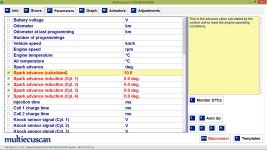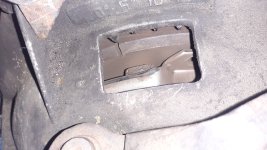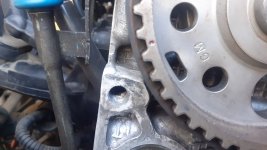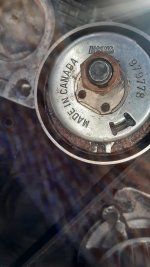Absolutely jr. Most succinctly put.That pretty much sums up my own thinking on this also.
So if after the new belt is fitted, the angular relationship between camshaft and crankshaft is exactly the same as it was before, then everything will work just the way it did before and no relearning is needed.
It follows from this that, if there are running problems after a belt change, the angular relationship between camshaft and crankshaft must be different. If this difference is small, the engine will run without destroying itself; if it is very small, but not quite good enough to run properly, then a phonic wheel relearn might do the trick.
If you mark everything before you start, work carefully, and your self-made marks are in the same place when you've finished, then the angular relationship shouldn't change. But there are still ways it might; slight variations in belt tension, manufacturing tolerances, some have suggested that pattern parts, especially water pump pulleys, may not be dimensionally identical.
The 'official' method of fitting highly accurate setting tools and loosening the cam pulley is likely designed to ensure the angular relationship is maintained in spite of any differences in replacement part tolerances. This can get you a more accurate alignment than using timing marks. With the latter, you can only position a belt to the nearest tooth; if you loosen the cam pulley, you can position it anywhere.
Remember also that if it is not the first belt change since the car left the factory, there is no way of knowing what method was used during its replacement, and you can't be sure that the old belt is aligned with perfect accuracy.
As you'll know from my previous posts I do these belts without slackening the cam pulley but always check the timing is correct by using the locking tools before I start. This does mean removing the cam cover but these engines seem to appreciate a new cam cover gasket at around the sort of age you will be doing the belt anyway. Providing the timing tools "drop in" to the cam and crank, I then use the "tippex" method and don't get any EML problems. I know for sure a couple of the wee garages local to me also do it this way, although one doesn't bother using the timing tools to check before he starts. He tells me he's never had a problem with one doing it this way. I think it's probably relevant that I always use a "big name" belt kit though.





